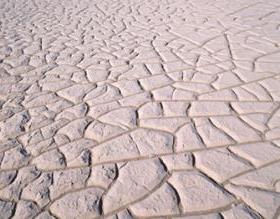Removing doubts about drought: science team refines understanding of Sahel's rains
Release Date 06 January 2016

Scientists have made a breakthrough in successfully forecasting long-term rainfall changes in the Sahel - one of the most vulnerable regions of the world which depends for much of its food, water and energy on rainfall during the brief rainy season.
Until recently, scientists have only had limited success in modelling the slow fluctuations between drought and flood witnessed by this region over recent decades, but now a team has set a new benchmark by successfully modelling observed rainfall changes over the last 25 years.
The Sahel region - lying just south of the Sahara in west and central Africa - witnessed a devastating prolonged drought in the 1970s and mid 80s, followed by a recovery of rainfall to more normal levels over the last two decades. These multi-year dry and wet phases are part of further long-term fluctuations of rainfall throughout the 20th century that have had big effects on food security, lives and livelihoods in Africa's Sahel region.
Lead author Michael Vellinga is a climate scientist with the Met Office's Hadley Centre. Commenting on the paper, he said: "Our breakthrough relied on using models with a much finer resolution than has been the norm in global climate modelling. Just as with digital photography, the more pixels you have the better defined the full picture becomes.
"For the Sahel we found that large (100s of kms), intense thunderstorms become much better represented at higher resolution. We showed that these intense thunderstorms are not just important for day-to-day weather but vital for accurately representing multi-year rainfall fluctuations in the Sahel.
"These intense thunderstorms account for most of the multi-year rainfall changes and are sensitive to variations in the atmosphere in West Africa and beyond. This sensitivity is much improved with higher resolution."
'This study is a strong demonstration of the value of understanding the underpinning processes in the climate system' -- Professor Pier Luigi Vidale
Pier Luigi Vidale is Professor at the Department of Meteorology and Senior Scientist at the National Centre for Atmospheric Science, University of Reading and a co-author on this study. He said: "This study is a strong demonstration of the value of understanding the underpinning processes in the climate system, which control climate variability. By recreating what is going on several times over (with ensembles) and in very fine detail, we can more accurately and robustly simulate how rainfall has changed and, based on understanding, how it will change, even at a regional scale."
The team trusts the breakthrough will lead to an improved understanding of how to make better predictions of changes in the near future for the region. Improved predictions will help decision makers to better anticipate future cycles of droughts and floods, helping local communities become increasingly resilient to this region's variable and challenging climate.
The team has increased the Met Office global climate model resolution from 130km to 25km squares, effectively providing around 30 times greater density of ‘pixels' everywhere. This provides a more detailed resolution of the processes for decadal rainfall change over this region and globally.
The study was funded through UK aid from the UK government under the Met Office/DFID Climate Science Research Partnership (CSRP) which worked with UK and African partners to advance the scientific understanding of African climate now and in the future, along with further support from DECC, DEFRA, NERC and NCAS Climate.
A new project IMPALA, part of the UK government-funded Future Climate for Africa (FCFA) initiative is using the understanding gained in this work and the higher resolution models to continue to improve understanding of African climate processes and the mechanisms of future change and help local planning decisions be designed to cope with future climate conditions . Work is ongoing to introduce finer scale global models in the wider climate modelling community under WGCM CMIP6 project as part of HighResMIP.
The paper, "Sahel decadal rainfall variability and the role of horizontal resolution", is published in Geophysical Research Letters.